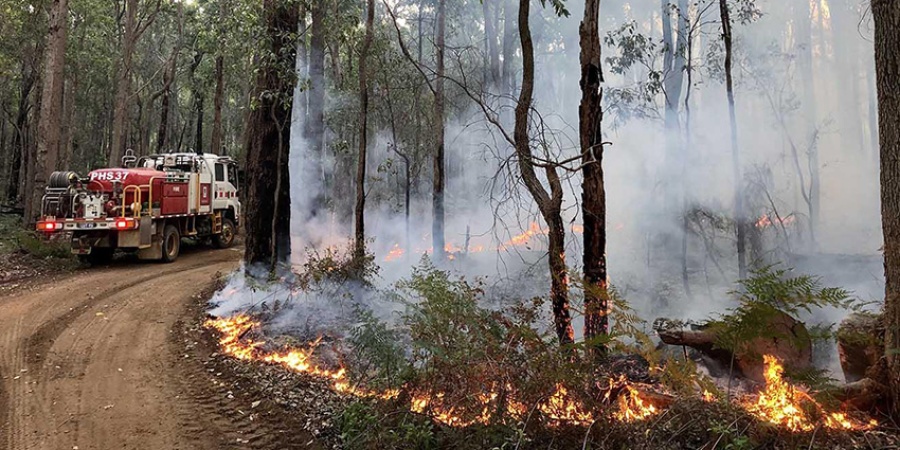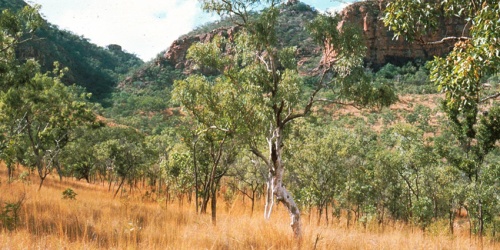
Low intensity fire for managing fuel
Animals of all shapes and sizes, from the largest kangaroo to the tiniest insect, depend on their environments for food, shelter, and areas to reproduce. Fire is an extremely effective force in both destroying and recreating these resources and changing the patterns, places, and times that they occur.
In Australia, animals have adapted to survive and thrive in fire-prone environments. Some are mobile and can move out of the path of a fire. Others are able to burrow, climb or take refuge in hollows and other sheltered sites.
However, fire can injure or kill individual animals, particularly if it is a large, high intensity fire. Some animals may be killed directly by fire or by smoke inhalation. Others may die afterwards due to predation by other species or through a lack of food resources and shelter. After a fire, the occurrence and abundance of animals is dependent on the rate at which the vegetation recovers. Animals recover quickly following low intensity, patchy fires but are slower to recover after high intensity, large fires that burn the entire landscape. Higher intensity fire leads to more uniform burning and lower habitat diversity.
Fire affects fauna distribution and occurrence because it burns fauna habitat. Some animals, such as kangaroos and brush wallabies, prefer recently burnt vegetation, whereas others, such as bandicoots and mardos, prefer longer, unburnt vegetation. Other species occur in a variety of ages. Some animals, like the mainland quokka, prefer a mix or mosaic of thick, longer unburnt vegetation for shelter or protection from predators, such as in swamps or creek lines, and recently burnt vegetation for food sources.
Research
Research has examined the effects of fire on the quokka (Setonix brachyurus) in the southern forests of Western Australia. More information is available for download at the bottom of this page.
Research has also focused on the effect of fire on animals in the tropical savanna of northern Australia, including Gouldian finches and threatened mammals. More information on these projects is available on the savanna fire ecology page.


